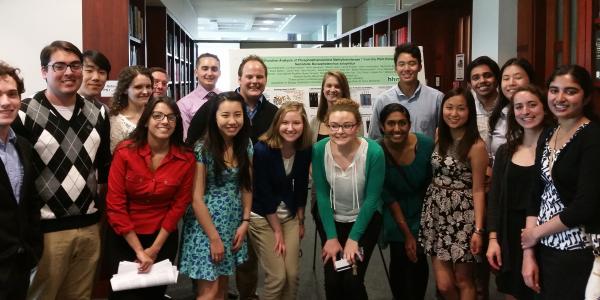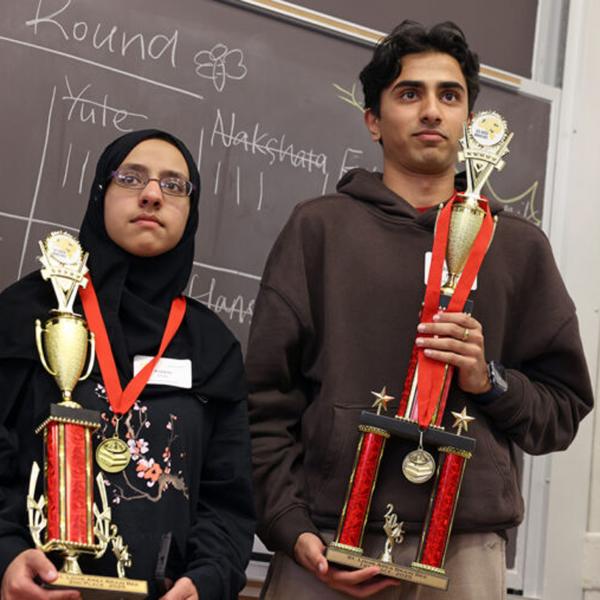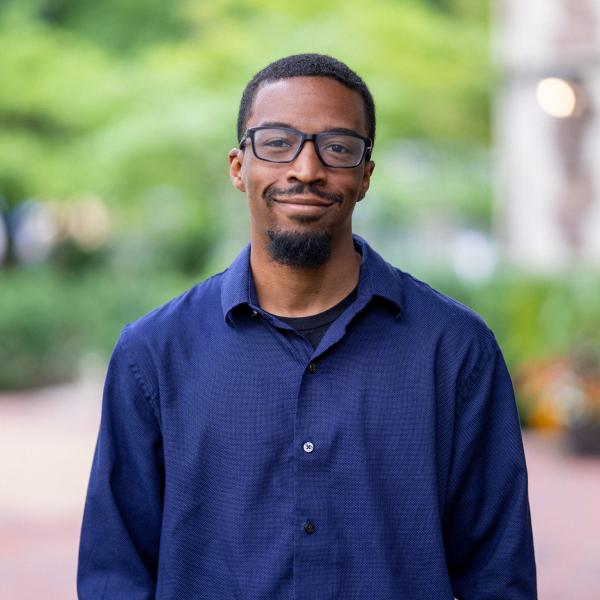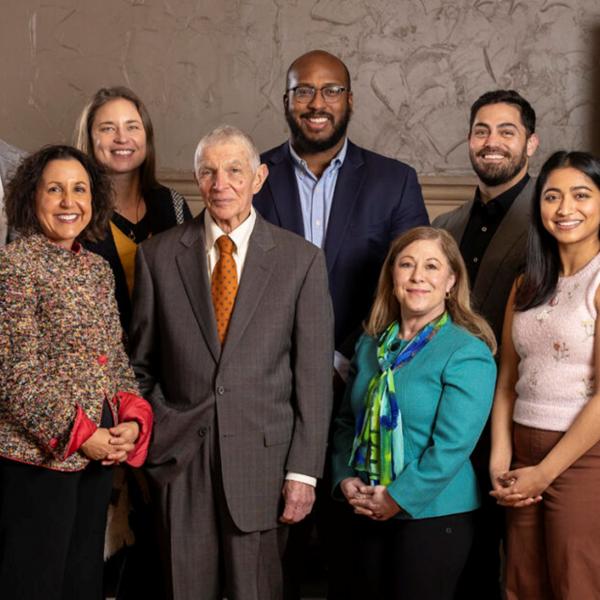For 10 years, an innovative biology course designed by Joe Jez and led by Wilhelm Cruz has offered undergraduates the opportunity to collaborate with a scientific laboratory.
Imagine an undergraduate laboratory course that collaborates with a scientific laboratory. Where the class works on real-world projects to generate data that advance scientific research. Where young scientists leading the project are also the instructors. Where the Principal Investigator ensures that every participant benefits in this symbiotic ecosystem.
Welcome to the Washington University’s upper-level laboratory course, “Laboratory in Protein Analysis, Proteomics, and Protein Structure” designed by Joe Jez, Spencer T Olin and HHMI professor and chair of the Department of Biology. The course, now led by Wilhem Cruz, teaching professor of biology, will be taught this spring for the 10th year.
Like many lab-based courses, students in this molecular biology and biochemistry focused course learn technical skills. They manipulate DNA; purify, quantify, and crystalize proteins; and create computer models of protein structures.
But they develop those skills while working with young scientists contributing data to their relevant research question. How do pathogens cause disease – at the molecular and biochemical level. What genes, proteins and pathways are involved in pathogenesis?
“The answers to these questions will help the scientific community identify drug targets for various diseases. Classes of undergraduate students are contributing to this important effort!” said Jez.
This effort has resulted in three scientific papers published this year in Molecular and Biochemical Parasitology, Bioscience Reports and Journal of Biological Chemistry.
And, most importantly, it is providing the next generation of scientists and educators with the real-world research and teaching experiences, respectively, that they need to be successful.
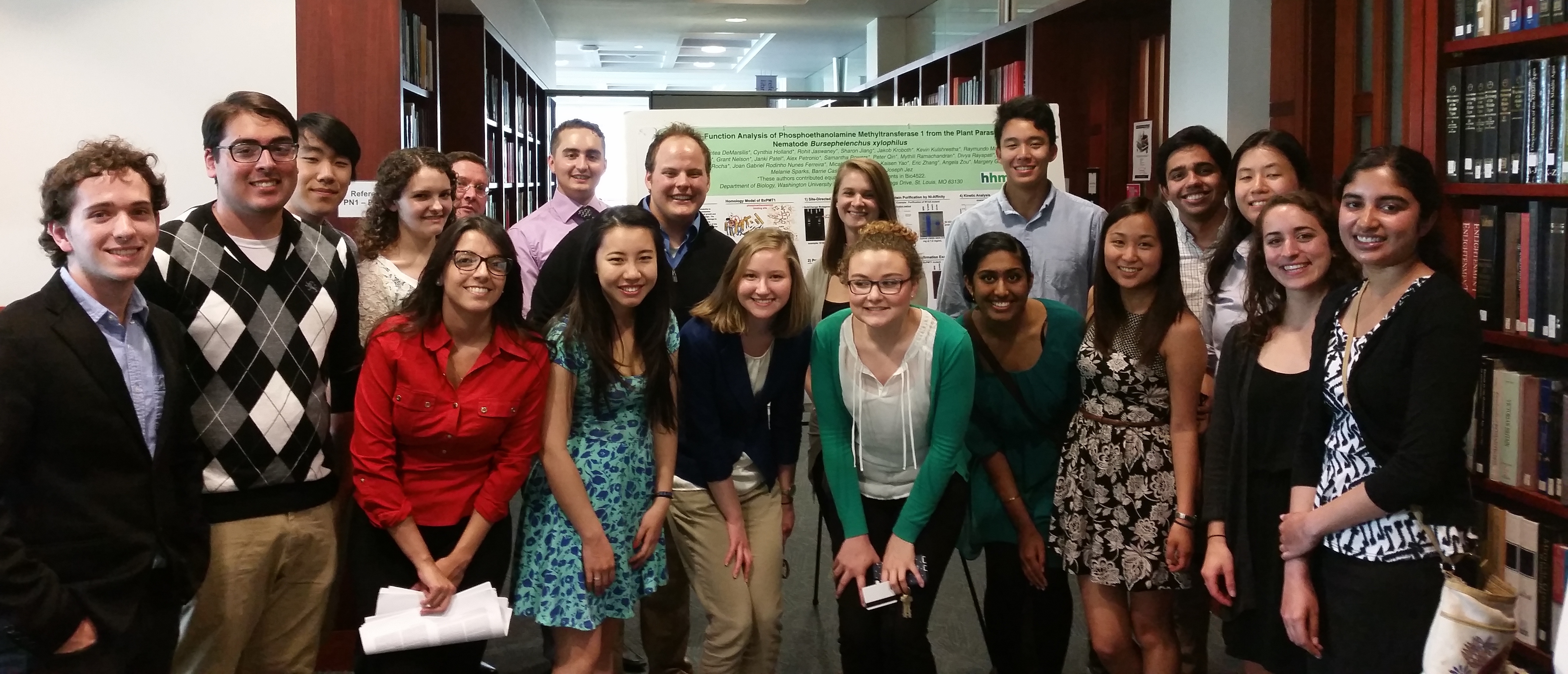
Building a better CURE
Course-based undergraduate research experiences, or CUREs, that provide undergraduate students with laboratory experience are not new. They were created to solve a supply and demand issue: there are not enough labs in departments to pair each biology major with a senior scientist. CUREs provide all students with a research experience.
CUREs are very effective at simulating the research experience to bring the content taught in traditional large lecture courses to life. Students perform experiments to which the answers are already known – therefore, success will be achieved and with that learning.
Jez realized the scripted process leaves little room for discovery. And what better way to give students that experience but to give them projects from the Jez lab that have yet to be embarked on. Projects for which the answers are still unknown.
But with the unknown comes the real possibility and high probability of failure – the same failure that scientists face in the lab daily.
“It takes the students time to realize that they are working on something novel and just because the experiment worked in another system does not mean it will in theirs.
“And they are forced to think about how they will more forward despite the failure. When they do it, they realize they can – it is a big confidence boast for them,” explained Joe.
Jez also enlists the young scientists who are leading the projects to work with the students. The scientists are graduate students or postdocs working in the Jez lab, individuals not much older than the students and therefore only one or two career stages ahead.
“I think it is important for the students to realize they are working for the individual who is going to benefit from the data the class generates. I think that connection helps motivate the class and gives the students a sense of purpose and buy in.
“I think it is important for the students to realize they are working for the individual who is going to benefit from the data the class generates. I think that connection helps motivate the class and gives the students a sense of purpose and buy in," said Jez.
“Because the demographic skews towards individuals who want to go to graduate school, it is a valuable experience for students to interact with the scientists who are doing what they want to do but at the stage that is a closer to where they would be next in their lives,” he continued.
A symbiotic model
Jez’s vision created a mutually beneficial symbiotic relationship between students and instructors. While the students gain real-world research experience, the instructors gain many helping hands to push the research forward.
When Sheri McClerklin,graduate student in the lab of Professor Barbara Kunkel, made the discovery that a plant pathogen infects its host by making a plant hormone – a unique strategy that prevents the pathogen from being detected by the plant’s immune system – she wanted to know how the pathogen makes the hormone.
But she could not figure out the answer on her own; the experiments were time-consuming and her time as a graduate student was coming to an end. McClerklin in collaboration with the Jez lab called on the undergraduate students to biochemically examine the three-potential proteins that may be involved. They helped determine how the protein that affects hormone production and reduces the ability of the pathogen to infect the plant operates. The work was recently published in Bioscience Reports.
Soon Goo Lee, former senior postdoctoral scholar in the Jez lab who collaborated with McClerklin, continued the work with another class to identify the function of one of the proteins that was not involved in the hormone synthesis pathway in work that not only lead to a publication in the Journal of Biological Chemistry but provided him with valuable teaching experience.
“Trusting graduate students and postdocs to lead instructions is what makes this course unique and provides them with group mentoring experience that is more challenging than the traditional one-on-one mentoring experience that is more common,” explained Jez.
It is that trust in Lee that made it possible for Lee to pursue his teaching interests as an Assistant Professor at University of North Carolina Wilmington.
"Teaching this course was a life-changing experience. It gave me a broader perspective on creating a more sustainable ecosystem in STEM. My final goal used to be to publishing peer-reviewed journal articles. Now the goal of my research projects is to create opportunities for students to participate in real-world research and to encourage them to become the next generation of scientists,” explained Lee.
"Teaching this course was a life-changing experience. It gave me a broader perspective on creating a more sustainable ecosystem in STEM. My final goal used to be to publishing peer-reviewed journal articles. Now the goal of my research projects is to create opportunities for students to participate in real-world research and to encourage them to become the next generation of scientists,” explained Lee.
Jez is a visionary who has changed the lives of countless students and trainees by challenging research and teaching endeavors to do better. In true symbiotic fashion, he too has benefited from his interactions with his students.
“Interacting with these students reinforces why I should be a professor here. And it is because of the students, they make it exciting," said Joe.

